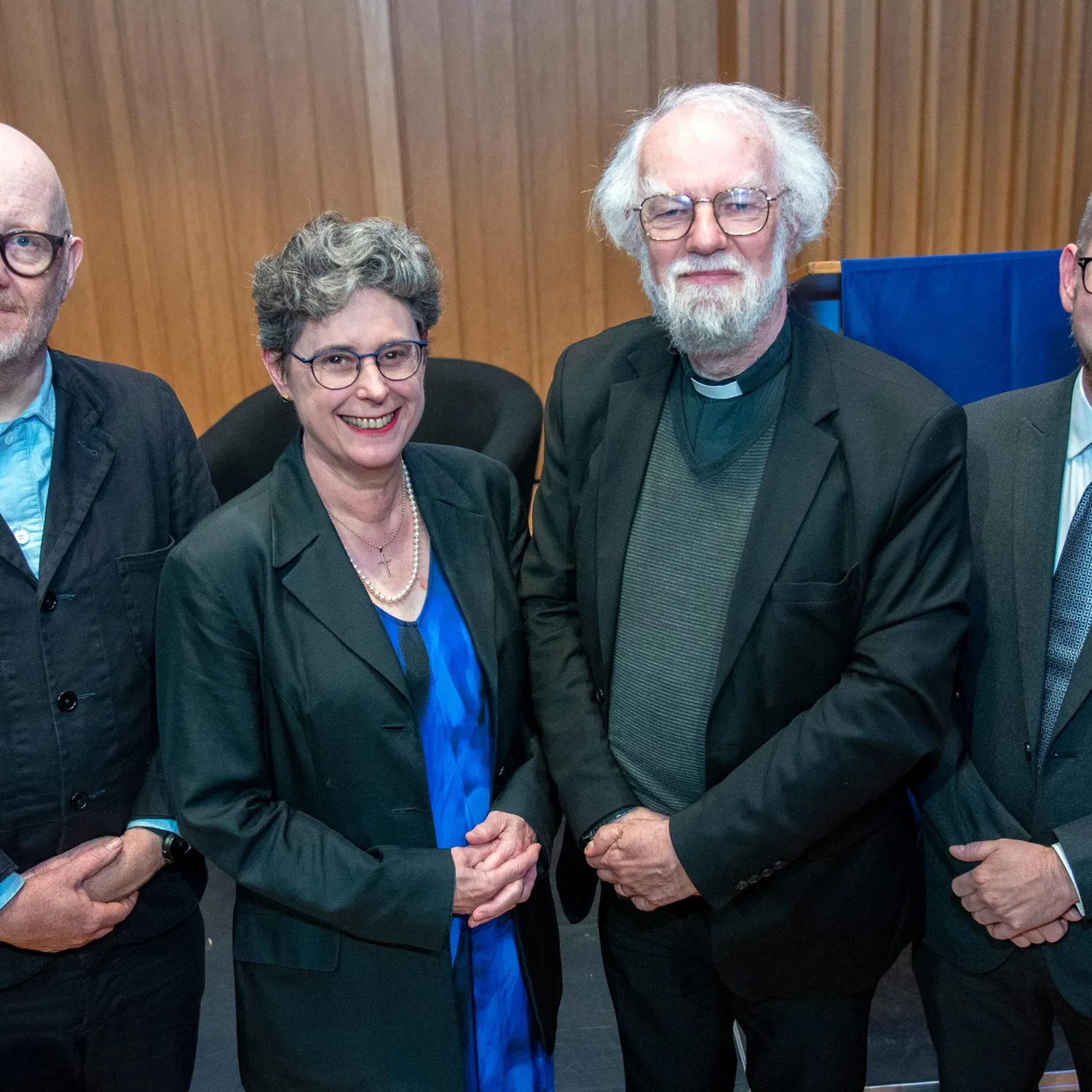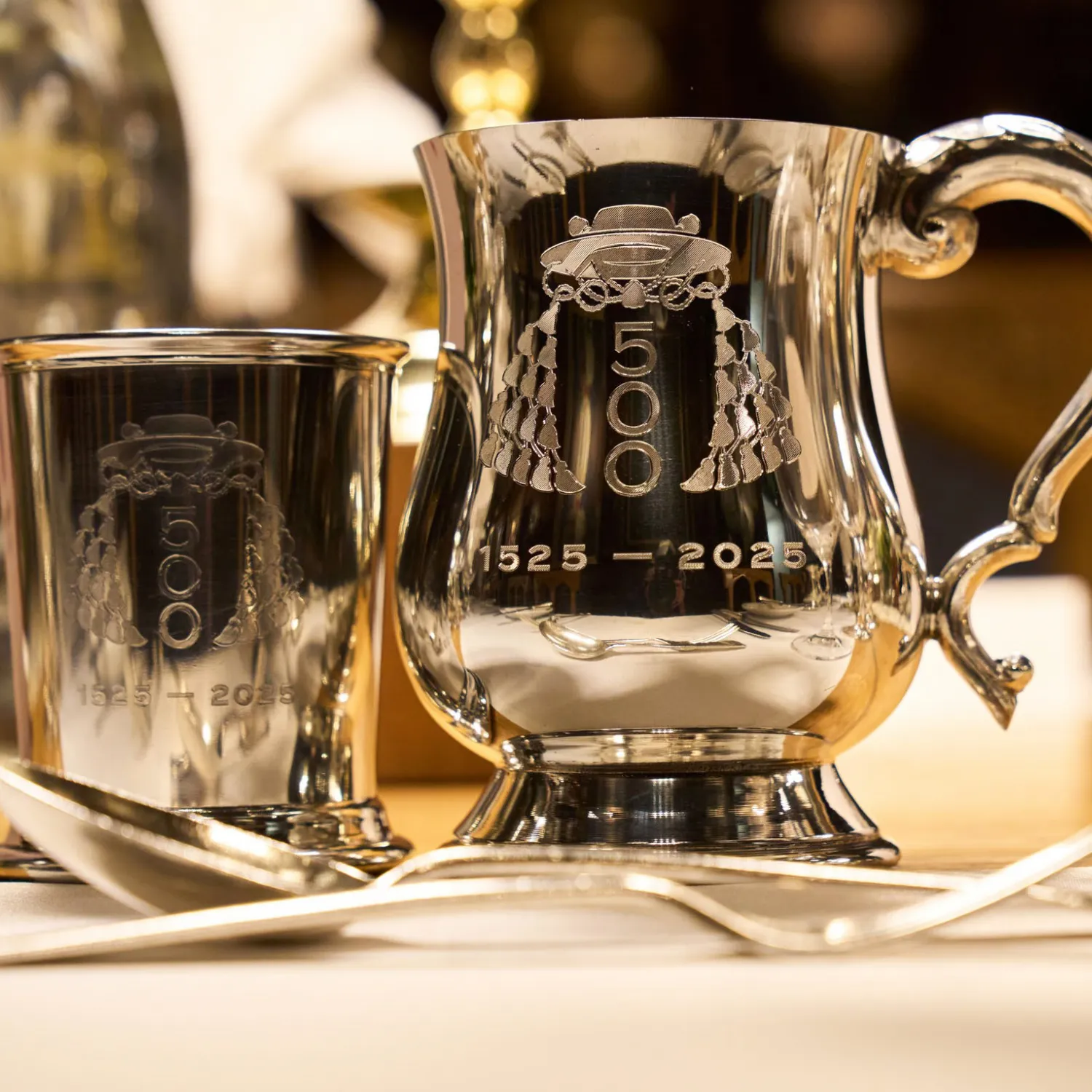Breadcrumb
Restoration of Mercury
Christ Church's statue of Mercury, located in Tom Quad, has recently undergone a much-needed restoration.
The statue, gifted to the college by Harold Bompas (ChCh, 1881) in 1928, is a lead version of Giovanni da Bologna's bronze statue of Mercury in the Louvre.
He replaced a previous Mercury statue, which was torn down in 1817 in an undergraduate ‘frolic’ led by the 14th Earl of Derby, subsequently Prime Minister. The head of that statue of Mercury can now be seen in the Library.
The piece was originally placed on a base that represented a puff of wind blown out by a putto head, which sat on a pedestal designed by Lutyens.
 In recent years, the statue had developed a distinct lean and historic repairs to its standing leg were opening up. With the pond in Tom Quad under repair, Christ Church decided to entrust Mercury to a conservation specialist. Cliveden Conservation was retained to remove the statue, and Rupert Harris Conservation Ltd was engaged to carry out the restoration work at their London studio.
In recent years, the statue had developed a distinct lean and historic repairs to its standing leg were opening up. With the pond in Tom Quad under repair, Christ Church decided to entrust Mercury to a conservation specialist. Cliveden Conservation was retained to remove the statue, and Rupert Harris Conservation Ltd was engaged to carry out the restoration work at their London studio.
The restoration process involved removing calcium deposits from the surface of the lead using low-pressure steam and an acidic gel cleaner. Test holes were then drilled into the lower leg to determine the construction method, revealing that the calf was hollow and the thigh was solid lead. Cuts were made into the calf to expose the armature in the area that it was distorted. Small adjustments were made to the square brass bar running through the leg, until the sculpture was deemed to be standing in the correct position.
Panels removed from the calf section were reinstated and the seams lead welded. The left arm was also found to be in an incorrect position and was moved further away from the torso. An extension to the caduceus (extending from the bottom of the hand) was turned in bronze and fitted to the existing bronze thread. The caduceus was primed, top-coated in yellow, and gilded with two coats of 24-carat gold leaf, restoring the statue to its original 1928 condition.
After cleaning, copper washers used below the fixing nuts were found to be old one-penny coins that had been drilled, and these were reinstated using the existing fixings and nuts. The statue was then put back onto its pedestal on 17 February and now looks resplendent with remodelled fountains framing its handsome torso.
Mercury is an intriguing figure for the centre of the college as the Roman god of financial gain, commerce, eloquence, messages, communication (including divination), travellers, boundaries, luck, trickery, and thieves; he also serves as the guide of souls to the underworld. This successful restoration ensures that it will continue to be admired by visitors and students alike for many years to come.
Other Christ Church news
















